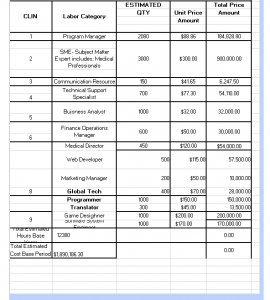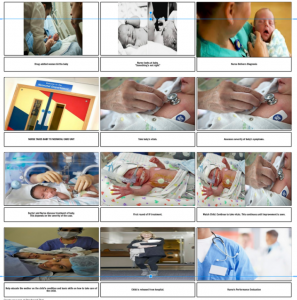Austin Gouchenauer
Ryan Scott
Ruth George
Sam Hooker
Katie Heidel
Link to PowerPoint/Prototype: http://docs.google.com/presentation/d/1xfu3iflU-4edBkzKCsrVGXwKZu6P9PArsCQ4A5qyrWE/edit?ts=58503806#slide=id.p
Proposal
In recent years, the use of virtual reality (VR) has become more popular. The functionality and development of VR has increased as well, which has allowed a variety of ideas to be introduced regarding how to utilize this technology. Since many video games are developed with the intent to entertain and sell, implementing education in popular games is a way to affect a wide audience. Due to its similarity to the video game medium, VR can also provide educational experiences capable of reaching many people, which can change the way that we use educational games and videos. With VR, we can immerse the audience into a world that can teach new views and ideas in a way that traditional video games are unable to: it allows us to get visual, first-hand experience with lessons and skills that can make the whole process more fun and endurable. When VR is successful, it can reach a wide range of ages and demographics. Virtual Reality, like many video games, also allows someone to get the perspective of another person and learn his or her story. Each person has his or her own thoughts and morals when it comes to different situations; through a VR experience, we plan on showing differing political mindsets in order to help people understand the “other side” of their opinions.
Unlike most video games, where you see the point of view of an assassin or zombie hunter, our goal with VR is to show the different sides of political controversies. With our prototype, we plan on using a single issue to demonstrate our goal: to give the user a wider view of how individuals with opposing views think when it comes to politics and the issues that are associated with it. Many people know why they believe in their own morals and stances when it comes to issues, but they don’t know or understand the opposing side’s reasoning. Our purpose is to allow the user to see the differences of the opposing side first-hand, to put the user into the shoes of a person with opposing ideals. The user will be able to see the opposing side’s lifestyle and disposition so that he or she can better understand where the “other side” is coming from, which will hopefully lead to a respect for others’ beliefs. From this experience, the user will be able to see how others think, and they will be able to possibly relate to or understand why others think so differently. This will lead people to accept others and their moral beliefs. Through this experience, any user can learn to respect an opposing party.
Although this game is meant to be used by people aged 18 years and older—because 18 is the minimum voting age in America—the interface that the user sees is quite simple and easy to use. Whenever the user opens the game through the VR headset, he or she will begin with a simple Start button that he or she can focus crosshairs on to move into the experience. Now, to get the best experience it would be ideal for the user to experience the view that opposes his or hers. Also, to get more immersed in the game and experience it better, the whole simulation would be an animation, so that it can also be more interactive. So, the next screen shown will have two options: to the left will represent the Liberal viewpoint, and the right side will represent the Conservative viewpoint. The user would turn to look toward the side that the user feels he or she is more apart or supportive of. Next the screen would change to the user’s perspective as a member of a family sitting together at a meal. The characters would begin to speak and would eventually ask for the user’s response, where the user would be asked to choose from a selection of responses requesting that the user pick which fits best to his or her preferred response. The only catch, however, is that the game has put you in a family that is talking about the side opposite of what you chose before the experience began. This enables the user to experience up front the reasoning and thoughts of the opposing side. This interface is simple to navigate, which can make it easier for any user who is not accustomed to the VR experience.
With the experience being a prototype, we have decided to focus on a single issue, and in a real version there would be several issues in different scenarios. However, in the prototype we decided to focus on the issue of prayer in schools, a controversial topic among the two groups (“Republicans v. Democrats”). This experience is meant to be available to anyone, so it would be downloaded as an app on the users’ phones and then used with Google Cardboard or Samsung goggles. This will make this game easily accessible, just like many other games.
Originally, we had a broad subject, knowing that we wanted to focus on political ideals and beliefs. Later on, we thought it was better to pick specific issues to present the game. The full game was intended to include several issues to focus on so that there would be more content for the user to compare and explore.
Right now, due to the path of using Google Cardboard or Samsung goggles, the technology is limited to only the visual aspect with the ability to move one’s head and the camera at the same time. Many of the other VR headsets include hand controllers, and if the original is successful then the implementation of the controllers would be able to make the game more interactive by adding environmental aspects that can be moved, or by using the controllers to point and select from the choices of responses. Since the game would feature animation, it would be easier to change the content of the game. If we were to use a 360-degree camera to shoot images for the game, then it would be costlier and time consuming. In animation, characters and setting can be reused. Right now this game’s purpose is to put users in the shoes of people who have different political ideals, but in the future it could be used for more subjects that do not include politics, such as foreign cultures, various jobs, or other aspects of life that people do not normally know or completely understand.
Through this game, after years of it being easily available, then hopefully the next generation of voters and politicians will be able to get along better. Today’s politics are filled with unnecessary arguing and no compromise. This game can help the future by enabling people to respect and understand those who they don’t agree with at all. This can help bring people together, allow more political laws and bills to be accepted, and also unite a country that at this point in time is separated through political parties.
Integrity Statement: We pledge on our honor that we have neither given nor received unauthorized assistance on this assignment/exam.
Works Cited
Mortara, Michela, et al. “Learning Cultural Heritage by Serious Games.” Science Direct. N.p., n.d. Web. 13 Dec. 2016.
Mutz, Diana C. “The Consequences of Cross-Cutting Networks for Political Participation.” American Journal of Political Science, vol. 46, no. 4, 2002, pp. 838–855. www.jstor.org/stable/3088437
Personalizing Politics: A Congruency Model of Political Preference. Caprara, Gian Vittorio; Zimbardo, Philip G. American Psychologist, Vol 59(7), Oct 2004, 581-594. http://dx.doi.org/10.1037/0003-066X.59.7.581
“Republicans v. Democrats.” Republicans v. Democrats. N.p., n.d. Web. 13 Dec. 2016.
Jackson, John S. The American Political Party System : Continuity And Change Over Ten Presidential Elections. Washington, D.C.: Brookings Institution Press, 2014. eBook Collection (EBSCOhost). Web. 13 Dec. 2016.

 https://docs.google.com/document/d/1S_tSRZYlAdClSF52xO3dK52Ae7capgttajqetJWiX9k/edit
https://docs.google.com/document/d/1S_tSRZYlAdClSF52xO3dK52Ae7capgttajqetJWiX9k/edit